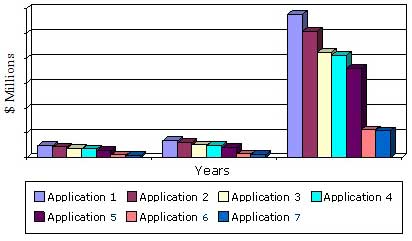April 22, 2015
Wellesley, Mass., April 22, 2015 –BCC Research (www.bccresearch.com) reveals in its new report on free-space optical communications, the ability of this technology to provide similar bandwidth and transmission capabilities as optical fiber network is one of the major factors fueling the demand for free-space optical communication.
The free-space optical communications market is expected to surge from $41.9 million in 2013 to $501.1 million in 2019, at a compound annual growth rate (CAGR) of 53.3% from 2014 through 2019. Data transmission, along with disaster recovery, commanded a market share of more than 40% in the overall free-space optical communications industry in 2014.
Of all the free-space optical communications, data transmission dominated the overall 2014 market with a share of 23.3%, closely followed by disaster recovery with a share of 20.1%. The healthcare facilities sector is anticipated to swell at the highest CAGR of 54% between 2014 and 2019. Europe holds the largest market share in the global free-space optical communications market, followed by North America, Asia-Pacific, and the rest of the world.
Free-space optical communication technology is an extension of the metro optical network core. A free-space optics (FSO) system uses infrared light instead of radio waves for data transmission. This technology offers low cost transmission as against radio frequency (RF) communication technology and fiber optics communication.
Copper wire technology is also used in certain cases but does not satisfy bandwidth requirements. Owing to these factors, the demand for free-space optical communication is predicted to gain rapidly in the forecast period. Rapid industrialization and the rising demand for high speed communication by business utilities is also expected to boost the demand for free-space optical communication. In the coming years technologies such as cable modems and Digital Subscriber Line (DSL) are expected to be replaced with free-space optical fiber communication technology.
“The high capacity of free-space optical communication coupled with affordable prices will elude end-users in the coming years and fuel its demand over the forecast period,” says BCC Research analyst Sinha G. Gaurav. “Free-space optical communication technology is affected by atmospheric turbulences and temperature changes. This factor may restrain its demand, but technological developments will minimize this effect over the coming years.”
Free-Space Optical Communications Technology: Global Markets provides factors currently driving and restraining the growth of the market, as well as factors impacting the future of the industry. Market forecasts are provided through 2019.

Editors and reporters who wish to speak with the analyst should contact Steven Cumming at steven.cumming@bccresearch.com.
Free-Space Optical Communications Technology: Global Markets( PHO018A )
Publish Date: Mar 2015
Data and analysis extracted from this press release must be accompanied by a statement identifying BCC Research LLC as the source and publisher. For media inquiries, email press@bccresearch.com or visit www.bccresearch.com/media to request access to our library of market research.